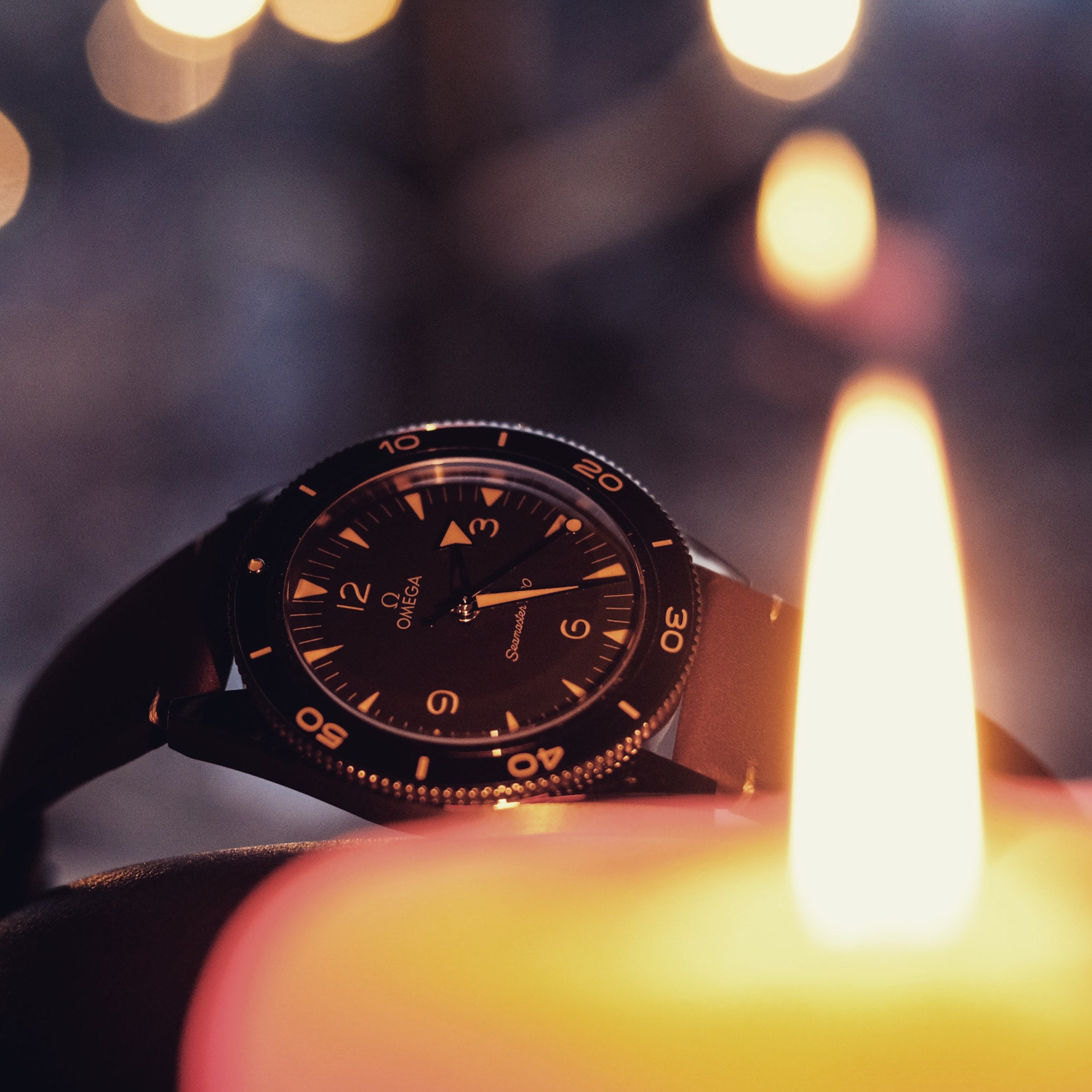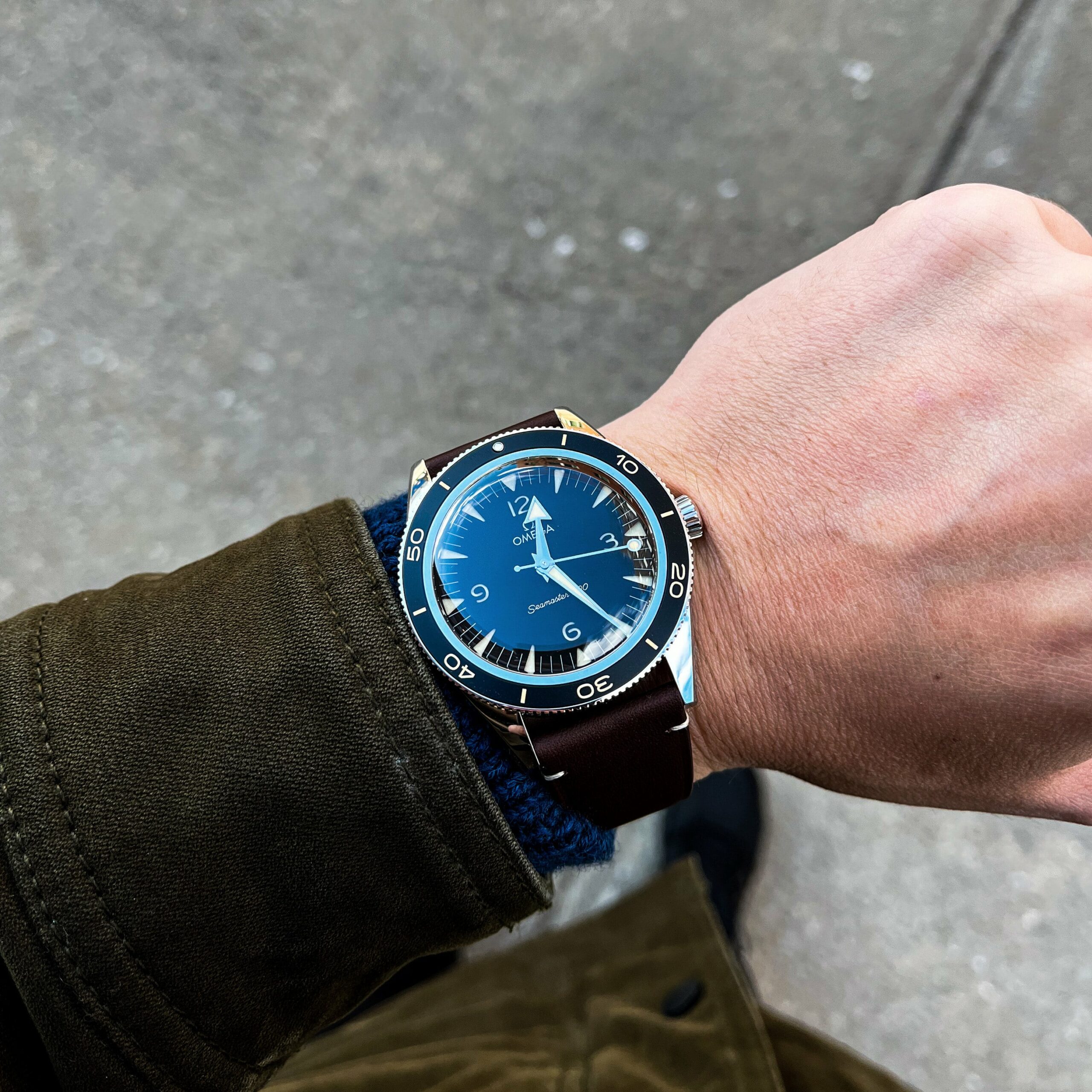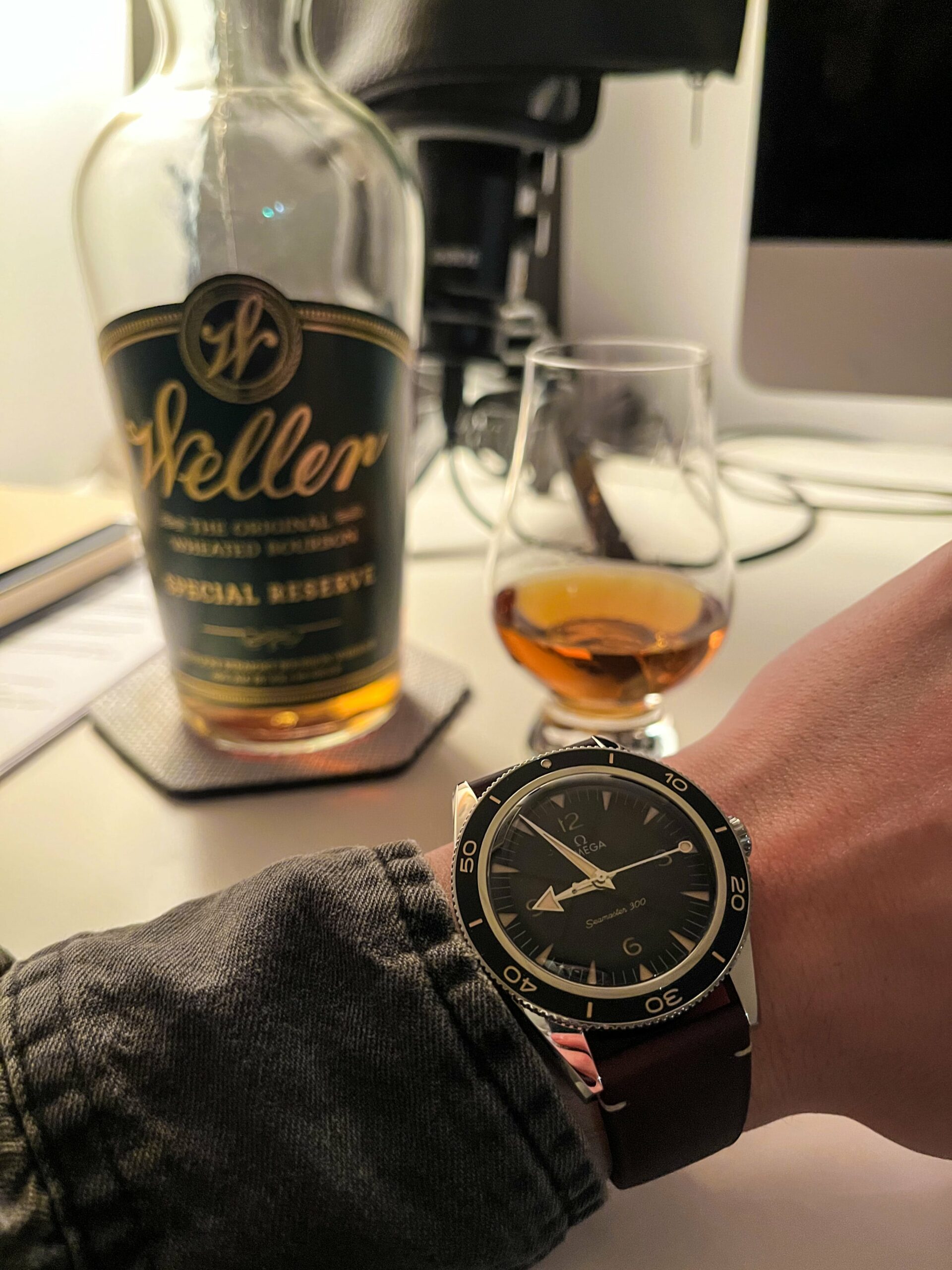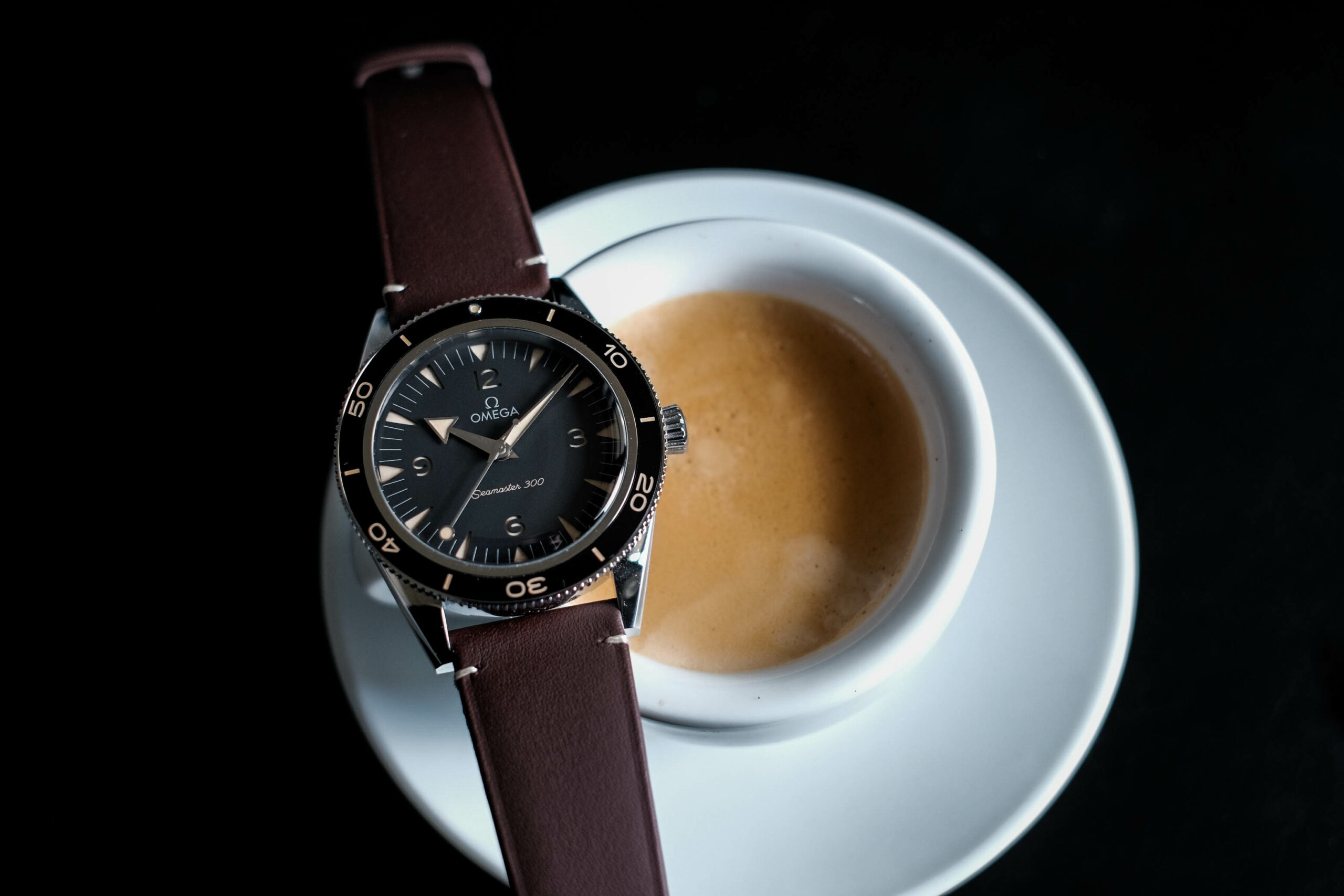
Way back in 1957, Omega introduced the original Seamaster 300. This was one of the first real dive watches, designed for people who spend a lot of time underwater. After nearly 65 years, it remains one of the most popular dive watches on the market, and it’s inspired other Omega lines.
But dive watches have changed a lot since the 1950s, and modern customers expect different performance and features. The latest and greatest Omega Seamaster 300 from the Heritage line marries this modern functionality with old-school, vintage appeal.
Among other upgrades, you’ll find a chronometer-grade movement, which makes the Seamaster 300 more accurate than many popular dive watches. Even so, you’ll still enjoy the same basic design, including the original blue and black dials. I’ll be reviewing the black variant, but the two are identical, except for the fact that the blue variant has a blue dial and bezel. Let’s begin!
A Throwback ‘50s Dial
The first thing I noticed about the dial is the way it’s constructed. Instead of a single backplate, there’s a combination of two, also known as a sandwich dial. The first plate is completely coated with a blue Super LumiNova paint. The top plate, on the other hand is black, but it has cut outs for the Arabic numerals at 3, 6, 9, and 12 o’clock. These numerals are located nearer to the center of the dial, with additional triangular cutouts to the outside, at the five-minute marks.

The hour hand has a short, arrow-shaped design, with a tip that glows blue to match the markings on the dial. The minute hand is slightly longer and thinner, with a green highlight that makes it pop. The second hand, meanwhile, is a carbon copy of the original Seamaster’s. It’s mostly very fine, like a needle, but there’s a round dot at the tip, with a blue lume finish.
A Rugged Stainless Steel Case
The Seamaster 300’s stainless steel case has a polished, high-gloss finish, with a total width of 41mm and a lug width of 21mm. This gives it a medium wrist presence, while still suitable for a large number of people. One thing I very much enjoyed was the tough, anodized aluminum bezel. It has a scratch-resistant finish, but it’s smoother and lighter than ceramic. This is a throwback to the Seamaster Diver 300M 007 Edition, but it’s a welcome touch. The numerals are coral in color, with a lume finish that glows blue in the dark. The dot at the 12 o’clock position glows green instead, for better readability.

The single crown has a flared design, wider at the tip than it is at the base. It has a screw-down design to keep it from accidentally getting pulled out, and it’s knurled to provide a secure grip. This, along with the knurling on the bezel, represents the only part of the design that isn’t smooth. The domed sapphire crystal makes the watch a bit thicker than it otherwise would be, at 13.85mm. Still, it looks attractive, and it doesn’t distort the dial as much as you’d expect. Meanwhile, a display back allows you to watch the movement in action.

The case, as with the rest of the Seamaster line, has a water-resistance rating of 300 meters. This makes it a true dive watch, capable of going to any depth you’ll ever reach outside of a submersible. This is backed by a five-year warranty, which covers both parts and labor.
Omega 8912 Movement
The beating heart of the new Seamaster 300 is the Omega 8912 movement. This movement has a diameter of 29mm, so it’s narrower than you’d expect for the case. But size isn’t everything, and the movement performs very well indeed. It provides a power reserve of 60 hours, and beats at a frequency of 25,200 beats per hour. Meanwhile, a current-gen co-axial escapement provides superior accuracy to many automatic movements. All in all, I didn’t have any complaints about either the accuracy or the performance.
2 Types of Straps
The Omega Seamaster 300 comes with two different types of strap, depending on which dial variant you buy. The black variant, mine, comes with a brown calf leather strap. It has a smooth finish, with ridges down both of the edges, and reinforced stitching near the lugs. The clasp is a simple stainless steel buckle, but it’s effective enough, and the understated design doesn’t distract from the dial.

On the other hand, the blue variant comes with a tri-link stainless steel bracelet. The links are nice and tight, and won’t easily pinch you like some other bracelets. The links are also different widths, and taper from 21mm at the lugs to a 16mm clasp. Finally, you’ll notice that this bracelet catches the light differently than most other tri-links. Rather than using polished center links and brushed outer links, the pattern is reversed, with brushed center links and polished links on the outside.
For more information or to view the full Omega watches lineup visit their official website here.
You can get the bracelet or strap with either the black or blue variants of this watch. The only difference is the colour of the leather: darker on the black version.
I purchased the Blue face & put it straight onto an Omega Blue alligator leather strap with folding clasp..
Sounds like it would pair well!
Hi,
What is the lug width of the SMP
Co-Axial master chronometer?
Thanks